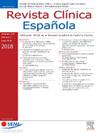VERICIDuAT: Vericiguat在射出率降低的心力衰竭患者中的实际研究
IF 1.7
4区 医学
Q2 MEDICINE, GENERAL & INTERNAL
引用次数: 0
摘要
本研究的目的是评估现实世界中心力衰竭伴射血分数降低(HFrEF)患者队列的安全性。方法采用观察性、回顾性、单中心研究方法,选取瓦伦西亚总医院联合医院心内科门诊2023年,最少随访6个月,接受验证治疗的患者。纳入根据ESC 2021临床实践指南诊断并优化治疗的HFpEF患者,并开始使用vericiguat治疗。结果我们纳入123例患者,平均年龄78岁,大多数为男性(62%),NYHA II功能状态(52%)。98例患者在中位随访162天(IQR 13-343)后完成随访。vericiguat的平均使用剂量为8.3±2.7 mg, 75例患者达到10 mg的目标剂量(71%)。随访结束时,proBNP (pg/mL)、CA125、血红蛋白(mg/dl)、电解质、肾小球滤过率(mL/min/m2)、收缩压(mmHg)均无明显变化。在所有完成随访的患者中,11例(11%)因不良反应停止治疗,主要是症状性低血压、消化系统症状和瘙痒;死亡25人(20%)。结论按技术资料表规定的参数使用本品是安全的。需要进一步的长期研究来评估vericiguat作为一种潜在的疾病改善治疗的影响。本文章由计算机程序翻译,如有差异,请以英文原文为准。
VERICIDuAT: Estudio en vida real de vericiguat en pacientes con insuficiencia cardíaca con fracción de eyección reducida
Introduction and objectives
The aim of this study is to assess the safety in a real-world cohort of patients with heart failure with reduced ejection fraction (HFrEF).
Methods
Observational, retrospective and single-center study with patients on vericiguat treatment from the Cardiology and Internal Medicine outpatient clinic of the Consorcio Hospital General Universitario de Valencia during 2023 year and with minimum follow-up of 6 months.
Patients with HFpEF diagnosis and optimized treatment according to the ESC 2021 clinical practice guidelines were included, to whom treatment with vericiguat was started.
Results
We included 123 patients with a mean age of 78 years, mostly men (62%) and with NYHA II functional status (52%). 98 patients completed follow-up after a median follow-up of 162 days (IQR 13-343). The average dose of vericiguat used was 8.3 ± 2.7 mg and 75 patients achieved the target dose of 10 mg (71%). At the end of follow-up, no significant changes were observed in the values of proBNP (pg/mL), CA125, hemoglobin (mg/dl), electrolytes, glomerular filtration rate (mL/min/m2) and systolic blood pressure (mmHg). Of all the patients who completed follow-up, 11 (11%) discontinued treatment due to adverse effects, mostly symptomatic hypotension, digestive symptoms and pruritus; 25 died (20%).
Conclusions
The use of vericiguat is safe, if used according to the technical data sheet, in terms of the established parameters. Further long-term studies are needed to evaluate the impact of vericiguat as a potential disease-modifying treatment.
求助全文
通过发布文献求助,成功后即可免费获取论文全文。
去求助
来源期刊

Revista clinica espanola
医学-医学:内科
CiteScore
4.40
自引率
6.90%
发文量
73
审稿时长
28 days
期刊介绍:
Revista Clínica Española published its first issue in 1940 and is the body of expression of the Spanish Society of Internal Medicine (SEMI).
The journal fully endorses the goals of updating knowledge and facilitating the acquisition of key developments in internal medicine applied to clinical practice. Revista Clínica Española is subject to a thorough double blind review of the received articles written in Spanish or English. Nine issues are published each year, including mostly originals, reviews and consensus documents.
 求助内容:
求助内容: 应助结果提醒方式:
应助结果提醒方式:


